2014.01.25 10:00
Sam Lubell examines the U.S.'s trouble keeping top design talent
Architectural history has a very interesting and very diverse timeline when you strictly follow chronological order. Take a look at just a small sampling of the architectural diversity of the 20th century in chronological order, for example, 1924, 1926, 1932, 1939. The notion that one architectural style/attitude dominates or is better than another (coexisting) style or is best suited to its time is really only artificial historiography. The real fact is that architectural history (on a strictly chronological and global scale) is extremely diverse and always has been. Thus, it's fairly certain that the 21st century is going to turn out being extremely diverse architecturally as well, and it might just help for all architects and historians to just generally realize that fact.
2014.02.04 13:48
4 February
Text of pleasure: the text that contents, fills, grants euphoria; the text that comes from culture and does not break with it, is linked to a comfortable practice of reading. Text of bliss: the text that imposes a state of loss, the text that discomforts (perhaps to the point of a certain boredom), unsettles the reader's historical, cultural, psychological assumptions, the consistency of his tastes, values, memories, brings to a crisis his relation with language.
Now the subject who keeps the two texts in his field and in his hands the reins of pleasure and bliss is an anachronic subject, for he simultaneously and contradictorily participates in the profound hedonism of all culture (which permeates him quietly under cover of an art de vivre shared by the old books) and in the destruction of that culture: he enjoys the consistency of his selfhood (that is his pleasure) and seeks its loss (that is his bliss). He is a subject split twice over, doubly perverse.
Barthes
1997:...it was the creation of the Palais des Congrès model that lead to a search/quest for the meaning of the promenade architecturale. I was first attracted to the Palais des Congrès because of its unique roof garden and the enormous ramp that springs out of the building and provides access to the roof. (The roof/box and the ramp were the first parts of the model created.) It was because of the roof design that the first comparisons to the Villa Savoye were made.
...story of the promenade architecturale continues from here:
1. finished the model and searched for the meaning of the building, and soon all the similarities between the Palais des Congrès and the Villa Savoye became apparent--the superficial comparisons were obvious, but the notion of a promenade architecturale formula came after (as a result of) the comparison.
2. Frampton's caption regarding the promenade architecturale at Villa Stein de Monzie added significance--at the Villa Stein de Monzie the manifestation of the promenade architecturale is more readily evident, especially the notion of a steadily ascending path.
3. The formula gelled through the evidence found in the three buildings.
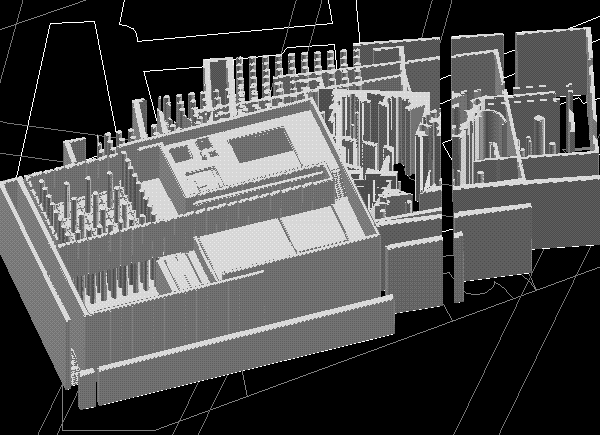
2000: Perhaps the real trick of the camera obscura is that it has managed to keep a lot of Western culture in the dark about how art really gets done.
I very much question the widespread opinion that being able to design well is dependent upon being able to hand-draw well. Such thinking basically means that someone without the use of one or both hands could never be a good designer. Let's hear it for all the **digitally** impaired designers out there that can now fulfill their design dreams because of CAD.
Anyone hear any more about the new voice activated drawing software that speak-no-evil.com is working on? Last I heard they just about finished their deconstruction language version, and next plan to develop several dead language versions.
ciao 4 now OR volare sursum deorsum pedes!
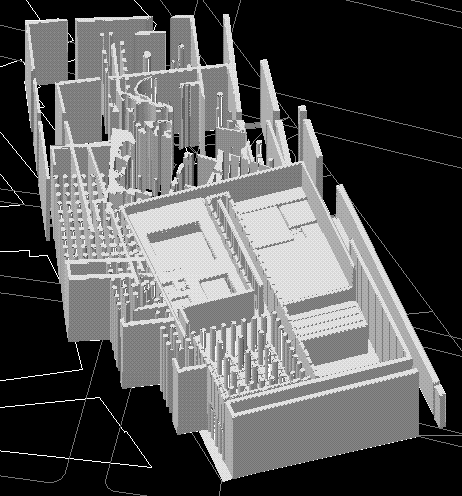
2001: This leads me to then ask, what exactly was the 'dominant' feature of Modernism (in architecture) when it was not a diversity of behavior, or, to but it in your terms, when Modernism was 'classical'? Essentially, I want to know if you can aptly describe when and how exactly architecture was at its most modern, that is devoid of any diversity.
I agree with you that Baroque architecture is not a product of 17th century politics, because Baroque architecture is more the product of 16th century politics (especially politics outside Italy that destabilized Italy). The Baroque of the 17th century is really just a reenactment of its illusory 16th century self, meaning the 17th century Baroque mirrors the 16th century Baroque. To understand the Baroque fully, you must learn to recognize both the illusory self of the Baroque and the Baroque's mirrored reenactment of its illusory self. For reflection of the Baroque to be true requires the Baroque's reflection to be Baroque as well.
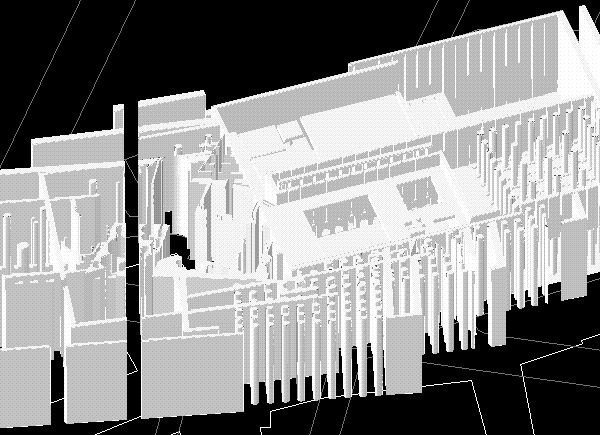
2003: Volumes of Unthinking an Architecture may include Remove, Lacunae, Nimiety, Sagacity, Chronosomatics, Atypical, Domestic, but not necessarily in that order. The order really doesn't matter. I'm thinking of UAA as a multi-part vehicle for product generation and placement. There is also the notion of being purposefully obscurant [toward absurd], thus allowing all kinds of non sequitors and an overall lack of presupposed cohesion.
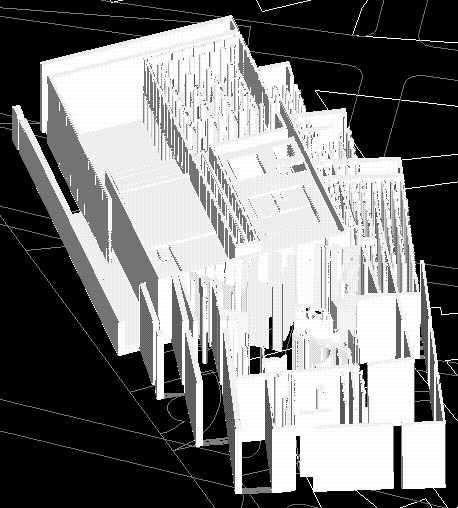
2005: And now I wonder what the Iraqi War Memorial in Washington DC is going to look like. Maybe an exact mirror of the Vietnam War Memorial on the other side of the Mall?
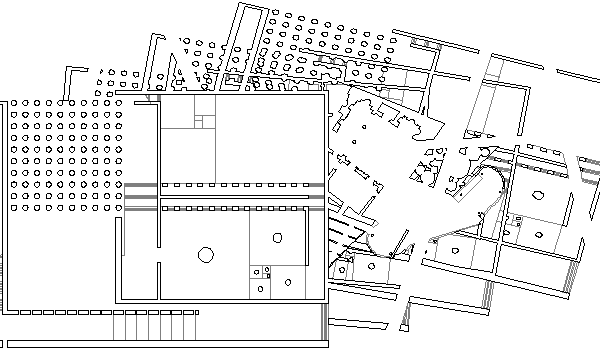
2007: Eutropia, Helena, and Constantine: They did a lot more than dabble; their architecture and urbanism shifted the whole paradigm of the Roman Empire.
| |
2014.03.10 22:16
10 March
Last night and early this morning, I read Sarah Williams Goldhagen's "Something to Talk About: Modernism, Discourse, Style" (JSAH, June 2005), where she sets out the prospect of (historians) addressing "What was, or is, modernism in architecture?" by "conceptualizing modernism in architecture as a discourse centered on the problem of how the built environment should be constructed to grapple with and respond to, rather than reject or ignore, the complex phenomenon of modernity [thus repositioning] it as a broad, deep, fundamental, yet also explicable social and cultural formation." Basically, Williams Goldhagen wants to see [the history of] modernism in architecture include all the "other" designs (by modernist architects) that are not done in the generally accepted modernist style. The desire is for a more honest rendition of modernism in architecture, but, yet, there also seems to be a subliminal assumption that (the history of) modernism in architecture would likewise provide a full history of architecture of the last 100 years. Wouldn't the most honest history of (roughly speaking 20th century) architecture include all the styles designed/produced over the last 100 years?
To be continued...
2014.03.12 16:07
10 March
...an article, at Dezeen yesterday, regarding Koolhaas and the curatorial intentions of the Venice Biennale 2014 is perhaps an interesting coincidence to the topic here:
The research-driven exhibition, entitled Fundamentals, will examine the essential elements of architecture and chart the emergence of a global architectural style. As well as encompassing the Arsenale and the Central Giardini Pavilion, this theme will extend to the 65 participating national pavilions for the first time in the biennale's history.
"After several architecture biennales dedicated to the celebration of the contemporary, Fundamentals will look at histories, try to reconstruct how architecture finds itself in its current situation, and speculate on the future," said Koolhaas.
"With great courage and ambition, after having traced the history of modernity over the past 100 years to the present, he identifies and presents the elements that should act as references for a regenerated relationship between us and architecture," added Baratta.
For me, the main issue is the dissemination of histories, how the various 'narratives' are taught and/or used to create a common understanding of what and how things happened and, like the biennale example above, thus also "speculate on the future." As you mentioned, the histories disseminated can be 'true' as well as 'false'. Is the common understanding of the history of 20th century architecture more true or more false? Is the common understanding a full picture of what actually happened when? Unfortunately, I think the common understanding is not all that it could be. In a sense, I would rather a 1:1 scale appraoch where the common understanding is more in tune with just how diverse each year of 20th century architecture (considered globally) actually has been. At this point, I can only begin to speculate what the future of architecture would be if architecture students were taught just how diverse 20th century architecture actually was. Will "the emergence of a global architectural style" to come out of the 2014 Venice Biennale be a true history? Or will it turn out to be yet another partial truth?
I just today borrowed Vidler's 2008 Histories of the Immediate Present: Inventing Architectural Modernism (which I read most of like five years ago), and it seems important to read again in light of the topic here.
| |
2014.03.16 19:52
16 March
After reading "Postmodern or Posthistoire?" it seems that the notion of posthistory coincides with the hyperactive assimilating imagination over the better part of the next two centuries.
2014.04.09 09:02
Frank Gehry unveils plans for his first buildings in England
In general, however, you're right that I hardly, if ever, focus on politico-socio-economical matters as they pertain to current built architectural manifestations and/or the practice(s) that generate these manifestations. In (very) base terms though, for me it's more a matter of my being ignorant of the subject rather than out right ignoring the subject.
Regarding "intellectual anesthetization", allow me a kind of anecdotal response. The architecture of Zaha Hadid Architects is not particularly my taste, yet I nonetheless find myself appreciating the quality of the design ability and it's overall unprecedented contribution to the 'history' of architecture. This appreciation, however, is only for some of ZHA's work and only for designs that are actually built--it's like I'm still kind of amazed that their architecture is indeed buildable (and that's where the 'thrill' for me comes from). Virtually none of this appreciation, as you already realize, comes from a consideration of all the positive and negative machinations that gets buildings built these days, so, in all fairness and kindness, sometimes just help me out.
2014.05.21 09:22
17 May
The first Tarantino film I saw was Pulp Fiction in 1994 and soon after that architecture started becoming very virtual. --2009.08.16
Started work on 5301e on the 17th and finally finished it last night.
Saw Tim's Vermeer late Monday afternoon--experimenting, learning and discovering via reenactment indeed. Exactly similar to the subject of (the forthcoming) 9020f:
After rereading some of Tafuri’s text on the Campo Marzio, for some reason it dawned on me that my redrawing of the Campo Marzio is an attempt to walk in Piranesi’s own footsteps, with the best of my ability, meaning, I am trying to learn how Piranesi’s imagination operated by doing the same thing that he did--literally redrawing the plan. I am trying to get as close to Piranesi’s own drawing/designing procedure.
I then thought of what Collingwood said about not being able to truly learn from history because we are not able to actually experience history. In this sense I am trying to re-experience a specific historic occurrence, albeit over 200 years later and with a radically different drawing technology. --1997.08.08
2014.07.11 16:42
Art + Architecture: Schumacher vs. Post-Net
Re: favorite book:
Thanks to the enormous scans within some really incredible online archives, I'm, just for about a month now, becoming very familiar with the volumes of post-Piranesi Italian archaeologists. For example,
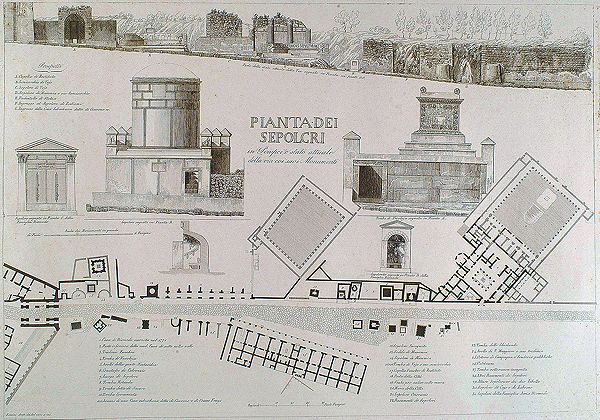
The great multitude of drawings filled with all their fine detail just seem to fulfill some innate longing of mine. And I'm finding myself not at all bothered if some of the 'reconstructions' are not actually correct because I'm enjoying all the data as a unique and kind of atemporal/fictitious virtual environment.
And a book that I'm presently dissecting (literally) to discovery the full workings of it's 'anatomy' is Hejduk's Pewter Wings, Golden Horns, Stone Veils.
And one of my favorite things to do, for almost 18 years now, is compose and publish 'books' via html and the internet.
|